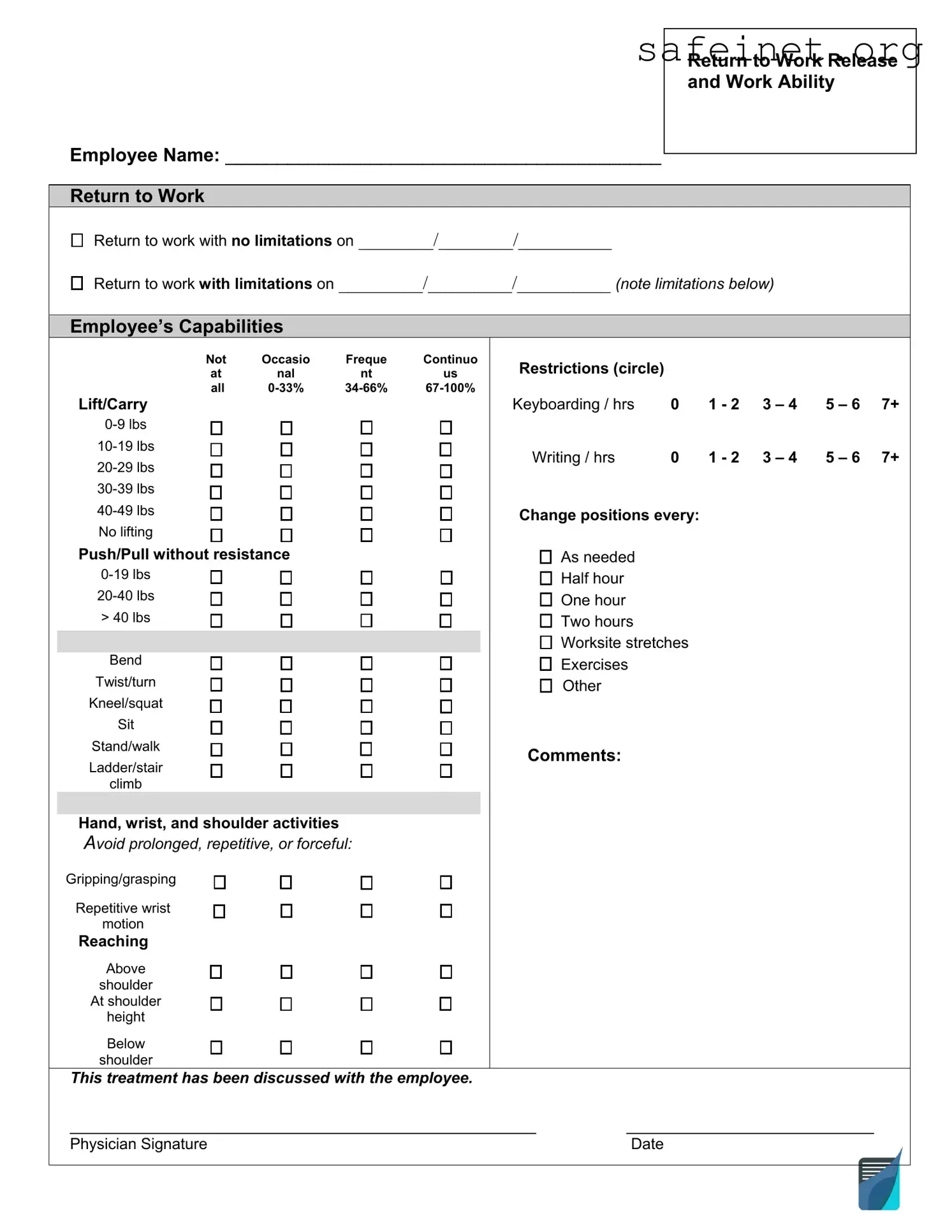What is a Work Release form?
A Work Release form is a document that allows individuals, often those under certain legal or correctional restrictions, to participate in work activities outside of their usual environment. This form is essential for ensuring that all parties understand the conditions and limitations tied to the individual's release for work purposes.
Who needs to fill out a Work Release form?
Generally, individuals on probation, parole, or those serving sentences that involve work opportunities in the community will need to complete this form. This is especially common for those in correctional facilities or rehabilitation programs who wish to work and reintegrate into society.
What are the key components of a Work Release form?
A typical Work Release form includes personal information about the individual, details about the employment opportunity, and the specific dates and times they are authorized to work. Additionally, it often outlines any conditions or restrictions that must be adhered to while participating in the work release program.
How does the approval process work for a Work Release form?
After the form is completed, it usually gets submitted to a supervising authority, such as a probation officer or a prison warden. They will review the information and assess any risks before granting approval. The timeline for this process can vary, so it’s best to submit the form well in advance of the intended start date.
Can a Work Release be revoked?
Yes, a Work Release can be revoked. If the individual violates any of the conditions outlined in the form or engages in prohibited behavior, the supervising authority has the right to terminate the work release. This serves to protect both the individual and the community.
What happens if I can't find a job while on Work Release?
If an individual is struggling to find employment while on Work Release, it’s important to communicate this with their probation officer or supervisor. They may provide resources for job placement or alternative programs aimed at helping individuals secure work opportunities.
Are there restrictions on the type of work I can do while on Work Release?
Yes, there are typically restrictions on the types of jobs one can accept. The supervising authority will provide a list of accepted job types, often focusing on positions that are deemed safe and supportive of reintegration. Avoiding jobs that involve significant responsibilities or high-risk situations is common.
Do I get paid while on Work Release?
Most individuals on Work Release will earn a wage for their work, much like any other job. However, there may be regulations on how much money is retained or allocated, especially if there are fines or restitution that need to be addressed. It’s best to clarify these details with the relevant authorities ahead of time.
How long is a Work Release effective for?
The duration of a Work Release is typically specified in the form itself, detailing the exact time frame for which the release is granted. It can vary depending on the case, so it’s essential to adhere strictly to the dates and times mentioned to avoid complications.

